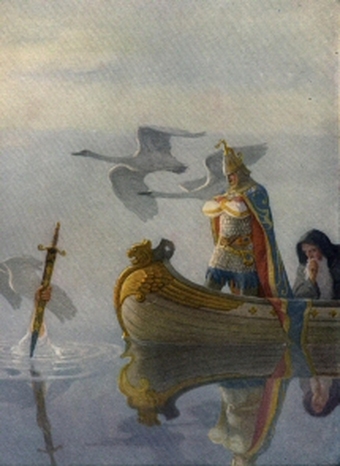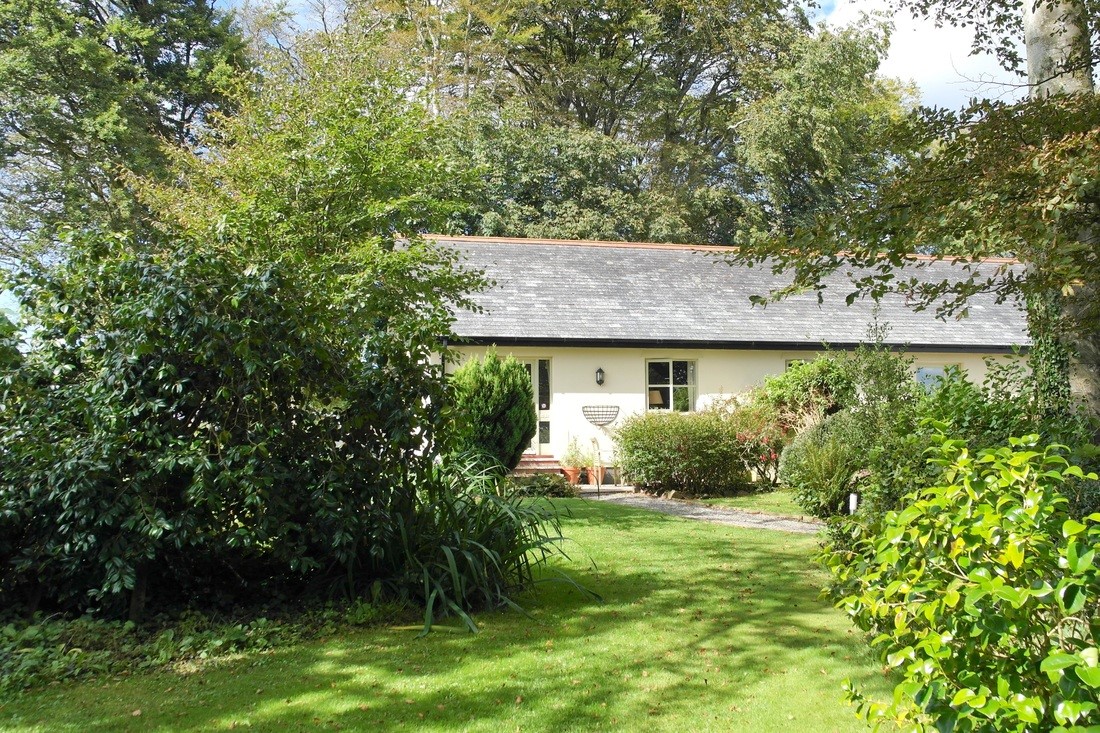The South-West is is brimming with legend and folklore. Many legends evolved to explain bizarre geographical phenomena – others, to deal with the conflict between pagan traditions and the new arrival of Christianity. We’ve selected our 8 favourite local legends (not including ghost stories – that’s still to come), all within reach of our boutique cottages. Have we missed your favourite? Let us know in the comments below.

8 – Branscombes Loaf
This curious rock formation near Sourton (just off the A30) has a typically curious Dartmoor tale attached to it. Legend has it that in the 1200s, the Bishop of Exeter, Walter Branscombe was travelling across the northern moor with his chaplain. Weary and hungry, they were approached by a darkly dressed traveller who offered them a loaf of bread and some cheese. Branscombe was about to accept the mysterious gift, when his chaplain suddenly noticed two cloven hooves peeking out from under the strangers cloak. He slapped the goodies from the bishop’s hand, whereupon the stranger immediately revealed himself as the devil himself. In a fit of anger, the devil turned the food into the rocky outcrops we see today.
7 – The Beast of Bodmin
Bodmin Moor isn’t the only reputed home to dangerous big cats, but the stories from the moor are perhaps some of the most enduring. Residents and visitors have been reporting sightings of large black beasts for centuries, and farmers have regularly complained of the death of livestock found with feline claw and teeth marks. Some have thought it a supernatural beast, while others are convinced it was an exotic pet such as a black panther, released onto the moor. The stories were so persistent that in the 1990s an extensive investigation was carried out. The result was that no conclusive proof was found to back up the legend, but neither could anyone show that such a beast could not survive undetected – and so the rumours persist.
6 – St Nectan’s Glen
This stunning little beauty spot consists of a wooded valley with a babbling stream, leading up to a private enclosed waterfall. It has been a spiritual place for centuries, and was a Victorian attraction where visitors believed the waters had healing powers. Legends abound, including the theory that the knights of the round table were blessed here before their quest for the Holy Grail. Most notably however, it is believed to be the site of the hermitage of St. Nectan. This pre-roman holy man is said to have rung a silver bell every time there was a squall, in order to warn ships of the dangerous rocks at the mouth of this valley. However, when romans invaded with their new gods, he vowed never shall they benefit from such a warning, and he threw the bell into the waterfall. Story has it that it will ring once more at the time of the greatest need.

5 – The Cheesewring
The Cheesewring is a granite tor to the east of Bodmin moor, resembling a huge stack of flat stones – its name comes from the press traditionally used to make cheese. Cornish legend tells of angry giants who roamed the county, and their hatred for the newly arriving Christian customs. The strongest giant, Uther, challenged a frail old Saint Tue to a test of strength, promising that if the holy man should win, all giants would leave the land, and if the giant should win then all Christians would be banished. After a quick prayer, Saint Tue agreed to the test. Uther threw the first and smallest stone; then to his amazement, Saint Tue, helped by divine power, deftly pick up one slightly larger and threw it atop of the first. Not to be outdone, Uther chose an even larger stone, and the game continued. Eventually, the exhausted giant could cope no longer and missed his final stone. Suddenly an angel appeared and took the very same stone, and carefully balanced it on top of the stack. The giants were stunned, and left the county ashamed

4 – Brentor
Brentor church is one of the most iconic buildings in the Westcountry, perched as it is on top of a steep granite outcrop (in fact an extinct ancient volcano). There are many different Dartmoor legends that seek to explain the location of this little church, but probably the best known is as follows: At one time, the residents of Brentor were pagans, but the rise of Christianity was beginning to take hold in the village and the residents decided a church should be built underneath Brentor, sheltering in its shadow. The devil heard this plan, and was furious. Overnight, he removed the foundations and placed them at the very top of the rocky outcrop exposed to the brutal elements. In the morning the villagers were undeterred, and carried the stones back down and continued the building. The next week it happened again. Not to be outdone, the villagers decided to leave the foundations in their new place, and build the church there instead. On the day of the church’s consecration, the Bishop of Exeter was confronted by the devil, angry that his plan had been thwarted. Legend has it that the Archangel Michael appeared and knocked down the devil with a round boulder, still visible on the path leading up to the church, and the church was named St. Michael.
3 – The Hurlers & Pipers
Local legend tells how centuries ago on a patch of common land near Liskeard, groups of men had decided to break the new Christian tradition and play a game of hurling on the Sabbath day – this is a unique Cornish game played with a small silver ball, not to be confused with Irish Hurling. These men started their match to the tune of two local pipers. Of course, in folklore no bad deed goes unpunished, and sure enough the three groups were turned to stone along with the two musicians. The three stones circles can be viewed today, along with the separate pair to the south-west. Thought to date to the early Bronze Age, this a quick and interesting little walk if you’re in the area.
2 – The Rivers Tamar, Tavy and Torridge
We couldn’t blog about Cornish legend without including the tale of our very own Tamar river. The story has it that a beautiful nymph named Tamara was born in the underground realm of her people. She was told never to venture up onto the lands above, which at the time were populated by huge and fierce giants. As she grew older, her curiosity got the better of her and she disobeyed her parents. She was enchanted by the world she found, but it wasn’t long before two Dartmoor giants, the brothers Tavy and Tawridge, found her. But rather than being dangerous, they were captivated by the little nymph, and fell in love with her. Flattered by the attention, she began to spend more and more time in the upper world, playing with her new friends. One day however, her father noticed her missing, and found her nestled with the giants under a bush in Morwenstow. In a fit of anger he cast a sleeping spell on the hulking beasts, and scolded his wayward daughter. She was defiant, vouching for the lovely temperament of her companions, but this only angered her father more. He could not have his own kin consorting with such a dangerous enemy, and so with a magic spell turned her to a river flowing southwards to the sea. Tavy later awoke and returned to the moors to his own father. Taking pity on him, his father cast his own spell and turned Tavy to a fellow river, destined to run alongside Tamara and eventually meet with her before the sea. Poor Tawridge awoke late, and also ran home. Again, the spell was cast, and Tawridge tried to follow Tamara and his brother. Unfortunately, he had woken too late to see where they went, and so ended up flowing northward to the Bristol channel. The rivers Tamar, Tavy and Torridge are famous in the region.
1 – King Arthur
Of course King Arthur has to take our top spot, not only being the region’s most famous legend but arguably one of England’s favourite stories to boot. History and legend intertwine, and numerous familiar versions of the story have emerged over a thousand years and more. Some stories suggest that Arthur was conceived and born in Tintagel, and was briefly nurtured by the wizard Merlin in a cave below the castle. The tale explains how the boy grew up unaware that he was the rightful king, until he pulled a fabled sword from a rock. In other versions, he rows across a lake (locally thought to be Dozemary Pool on Bodmin Moor) and is handed the sword by the Lady of the Lake. The story continues as Arthur leaves his son Mordred in charge of the kingdom while he ventures onto the continent, only to find on his return that his son has married his wife! The final battle ensues (often thought to be at nearby Slaughterbridge); Mordred is killed and King Arthur is fatally wounded. Although the current castle at Tintagel is too recent to be linked with the historical figure of King Arthur, the area is still inextricably linked with Arthurian legend, and the dramatic coastline inspires romantic tales of heroism.



